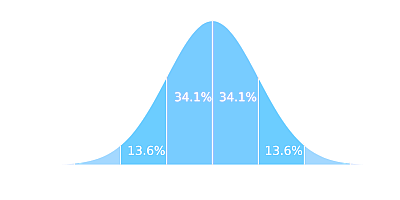A Factorial Design and MANOVA This case study is divided into two separate parts. The first part requires
A Factorial Design and MANOVA
This case study is divided into two separate parts. The first part requires the use of a factorial design to determine if coffee drinkers are more alert towards the end of the working day than non-coffee drinkers. The case also examines the extent to which obesity may be a factor. The second part requires that you present a set of data in an appropriate manner that allows for interpretation of the data based on an ANOVA with a Covariate and a MANOVA
Case assignment due by the end of this Module.
PART I
A Factorial Design
-
You wish to determine if coffee drinkers perform better near the end of the working day than non-coffee drinkers. You also want to know if obesity is also a factor in their ability to negotiate the maze. You develop a simple maze for the study's subjects to negotiate in timed trials. The maze requires that the subjects complete a simple task at various points before being allowed to continue. The maze and required tasks are designed to test performance abilities and one's physical abilities should not effect performance.
Before you begin this part of the Case Assignment please review the Table below. Construct a SPSS database for the study. Remember that each person participating this study falls into only one of four combinations for only TWO factors (Obese or Not Obese and Coffee drinker or Non-Coffee drinker). Therefore, there are four different conditions being measured and evaluated which are a combination of only two factors. (Hint: There are only three variables for this study (Time to complete the maze, coffee and obesity. Time is the dependent variable. Coffee and obesity are factors and are grouped variables. They are also called a coding variable in SPSS. Under "Value" click on grey box and open "Define Labels" window. Code the grouping factor of coffee as 1 = Coffee Drinker and 2 = Non-Coffee Drinker. Click on the "Add" button then repeat for Obesity. Go to: http://web.umr.edu/~psyworld/between_subjects.htm for an explanation in factorial designs. Remember, this case requires only a 2 x 2 factorial and not the 2 x 3 factorial discussed on the above linked site. Also, it may help to simplify your data before running the analysis. Once the database is set up please complete the tasks listed after the data table below: - Data Table for the 2x2 Factorial Design Data. Data presented in number of seconds over 2 minutes for subjects to complete the maze and tasks.
Time for Groups of Employees to Complete Maze
|
Group 1
Coffee Drinkers/ Non-Obese |
Group 2
Coffee Drinkers/ Obese |
Group 3
Non-Coffee Drinkers/ Non-Obese |
Group 4
Non-Coffee Drinkers/ Obese |
| 10 | 8 | 10 | 10 |
| 3 | 4 | 10 | 15 |
| 5 | 9 | 10 | 14 |
| 7 | 10 | 8 | 12 |
| 5 | 11 | 8 | 14 |
| 8 | 8 | 10 | 14 |
| 8 | 8 | 8 | 12 |
| 4 | 6 | 12 | 11 |
| 10 | 6 | 6 | 10 |
| 4 | 6 | 7 | 13 |
| Notes: Groups ran the Maze between 4:00 - 4:30 pm at the end of the work day. Time is recorded in seconds over two minutes. | |||
- Write a Hypothesis for the subject study.
- Present the data in a meaningful graph with appropriate explanation/description.
- Discuss why Post hoc tests cannot be run with a 2 x 2 factorial design.
-
Describe and interpret your results.
PART II
Two-Way ANOVA with Covariate - Utilizing the Ugandan database perform Two-Way ANOVAs with meaningful variables (factors) as follows:
- Run a Two-Way ANOVA with Age at First Marriage as the dependent variables with the two independent variables (factors) selected as meaningful variables.
- Run a Two-Way ANOVA with Age at First Marriage as the dependent variables with the two independent variables (factors) selected as meaningful variables AND Age at First Intercourse as the covariate.
6. Properly interpret the SPSS output for each Two-Way ANOVA performed. Properly discuss how the use of Age at First Intercourse as a covariate had an effect on the interpretation of the effects of the independent variables on the dependent variable.
7. MANOVA - Run a MANOVA with Age at First Marriage and Age at First Intercourse as the dependent variables. Use the same independent variables that were used for the ANOVAs used above.
8. Discuss the differences and similarities between the MANOVA and the ANOVAs.
Deliverable: Word Document


![[Solution Library] Part A -- Can ANOVA Help to Answer this Question? [Solution Library] Part A -- Can ANOVA](/images/solutions/MC-solution-library-80430.jpg)
![[Solution Library] Part One: Putting it All Together This case requires [Solution Library] Part One: Putting it All](/images/solutions/MC-solution-library-80431.jpg)
![[Steps Shown] Why we hate airline travel Background Many people [Steps Shown] Why we hate airline travel](/images/solutions/MC-solution-library-80432.jpg)


